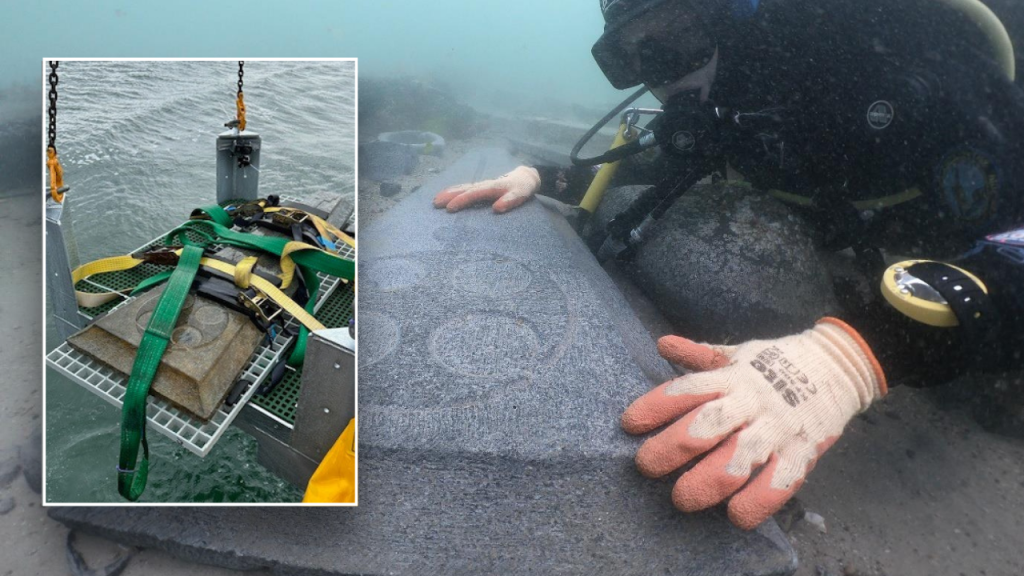British archaeologists from Bournemouth University recently made a significant discovery of eerie medieval gravestones near an ancient shipwreck in Studland Bay, off the coast of Dorset. The gravestones, made from Purbeck marble, have been submerged in the English Channel for about 800 years. They were part of the cargo on England’s oldest historic shipwreck, which sank during the reign of Henry III in the thirteenth century. Despite the long time underwater, the slabs were remarkably well-preserved, with carvings of Christian crosses likely intended for high-status clergy members.
Maritime archaeologists worked for over two hours to retrieve the heavy gravestones from the sea. The larger slab, weighing around 440 pounds, was in two pieces with a combined length of two meters. The research team believes these slabs were intended as coffin lids or crypt monuments for important individuals in the clergy. The type of stone used for the slabs, Purbeck marble, has also been found in famous English cathedrals such as Westminster Abbey, Canterbury Cathedral, and Salisbury Cathedral. This discovery sheds light on the medieval stonemasonry industry and the significance of these monuments for the clergy during that time.
The discovery of the gravestones is part of ongoing research at the Mortar Wreck site, which was first identified as an obstruction in 1982 but not fully explored until 2019. Tom Cousins, the archaeologist leading the study, and his team dove to the site, revealing the secrets hidden beneath the sand. The grave slabs are being desalinated and conserved to be displayed to the public next year. This effort will allow further insights into thirteenth-century life and the craft of stonemasonry. The importance of the shipwreck site and the artifacts recovered from it are offering new information about medieval England and its maritime history.
The Purbeck marble used for the gravestones was likely quarried near Corfe Castle in Dorset, a region known for its stone industry during the thirteenth century. While there has been a debate about where the stone was carved and polished, the discovery of these grave slabs confirms that they were being worked on locally before the ship sank. The presence of barnacles on one of the slabs suggests that they were not finished with the typical shiny surface seen in cathedrals. This finding adds another layer to understanding the production and distribution of these monumental slabs for religious figures in medieval England.
The research team’s work to recover and study the artifacts from the Mortar Wreck site is providing valuable insights into the maritime history of England and the craftsmanship of medieval stonemasons. By exploring the significance of these gravestones and their connection to high-status clergy members, the archaeologists hope to gain a better understanding of thirteenth-century life. The ongoing conservation efforts and future public display of these remarkable artifacts will bring attention to this important discovery and its contribution to the archaeological record. The collaboration between local divers, archaeologists, and researchers highlights the significance of community involvement in uncovering and preserving historical treasures.


